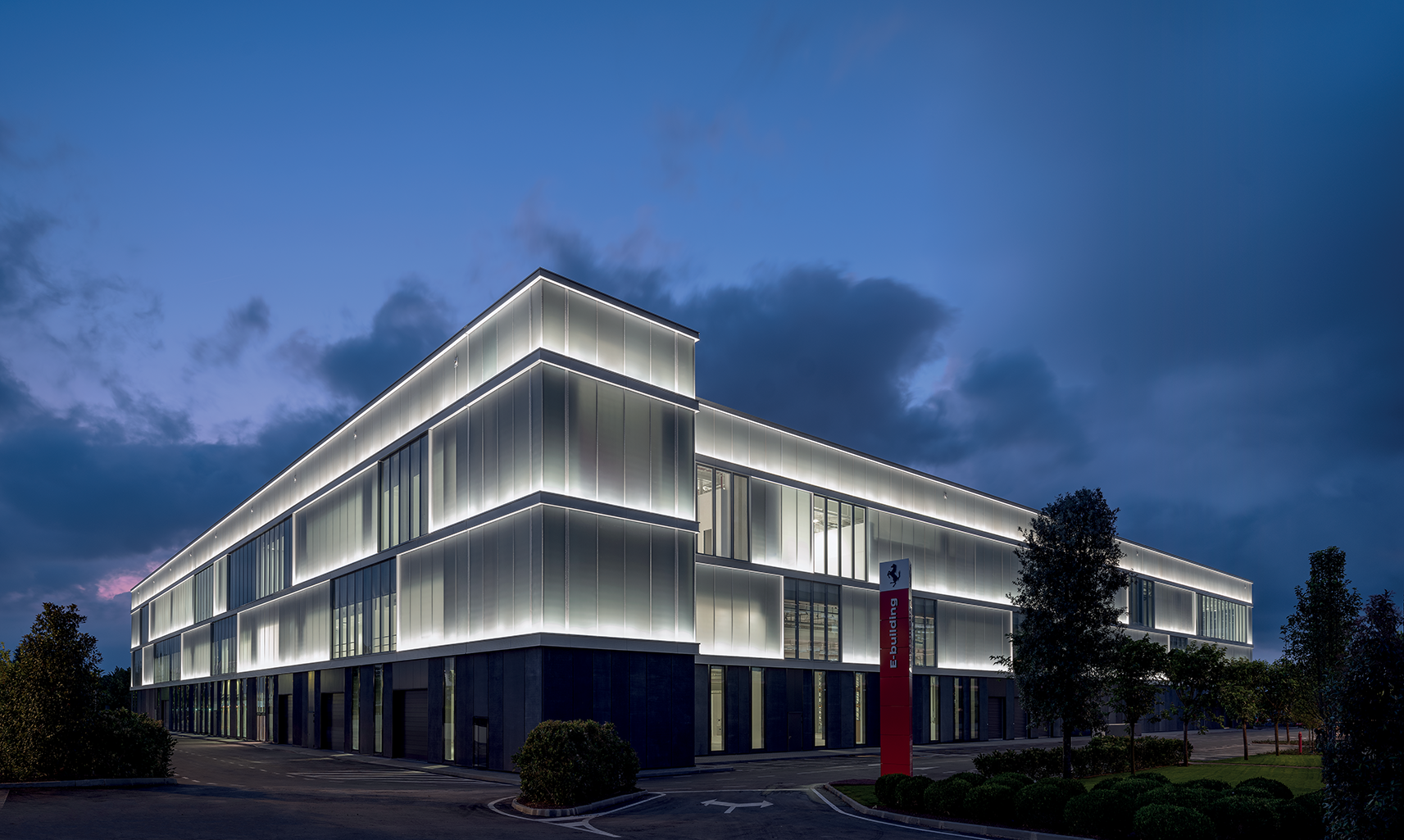The project
The project is situated within the new northern expansion area of the Maranello production site, which extends over a total area of 130,000 sqm. The design of the new building, which is on two main levels plus two mezzanine floors, encompasses a total area of 42,500 sqm, combining the functional requirements of this new production space and, by interacting with the surrounding environment, takes the opportunity to lay the groundwork for a high-quality regeneration process within Maranello's industrial area.
The building, which accommodates both the production and administrative functions, is devoted to the production of internal combustion, hybrid and, in the future, electric Ferraris.






















.jpg)
_LD.jpg)
.jpg)
.jpg)
-739.jpg)

_Thumbnail.png)

-756.jpg)

